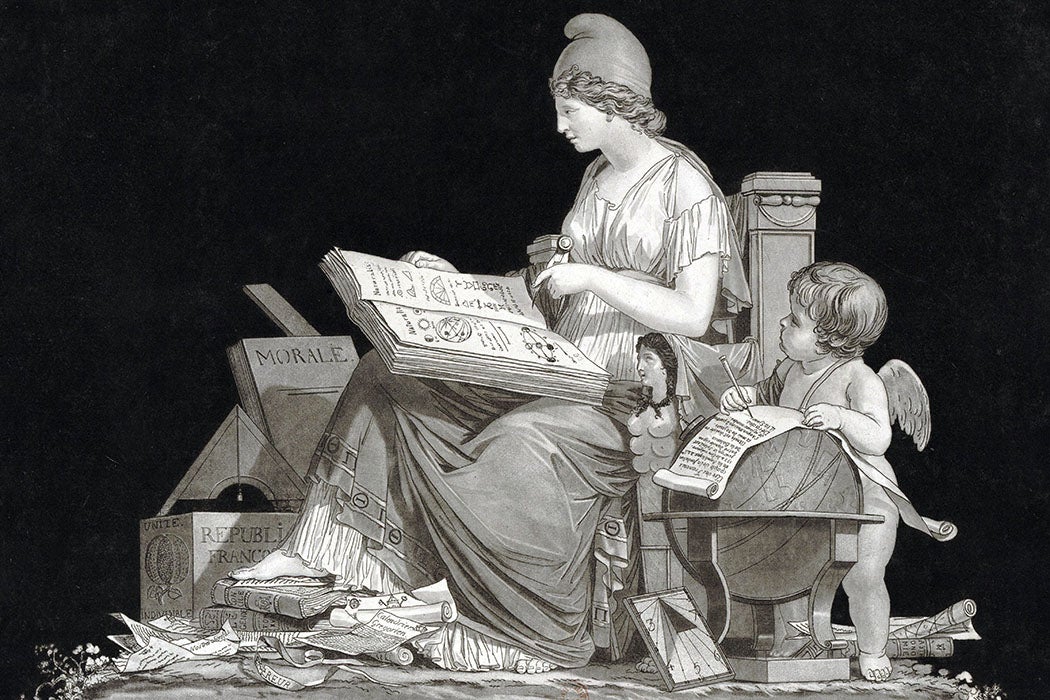

It is because of his position as rapporteur of the commission that the creation of the republican calendar is attributed to Romme. As the rapporteur of the commission, Charles-Gilbert Romme presented the new calendar to the Jacobin-controlled National Convention on 23 September 1793, which adopted it on 24 October 1793 and also extended it proleptically to its epoch of 22 September 1792. They associated with their work the chemist Louis-Bernard Guyton de Morveau, the mathematician and astronomer Joseph-Louis Lagrange, the astronomer Joseph Jérôme Lefrançois de Lalande, the mathematician Gaspard Monge, the astronomer and naval geographer Alexandre Guy Pingré, and the poet, actor and playwright Fabre d'Églantine, who invented the names of the months, with the help of André Thouin, gardener at the Jardin des Plantes of the Muséum National d'Histoire Naturelle in Paris. The new calendar was created by a commission under the direction of the politician Charles-Gilbert Romme seconded by Claude Joseph Ferry and Charles-François Dupuis. Natural constants, multiples of ten, and Latin as well as Ancient Greek derivations formed the fundamental blocks from which the new systems were built. Amid nostalgia for the ancient Roman Republic, the theories of the Enlightenment were at their peak, and the devisers of the new systems looked to nature for their inspiration. The new Republican government sought to institute, among other reforms, a new social and legal system, a new system of weights and measures (which became the metric system), and a new calendar. The days of the French Revolution and Republic saw many efforts to sweep away various trappings of the Ancien Régime (the old feudal monarchy) some of these were more successful than others. HistoryĪ copy of the French Republican Calendar in the Historical Museum of Lausanne Later editions of the almanac would switch to the Republican Calendar. Individual days were assigned, instead of to the traditional saints, to noteworthy people.

(The months of September through December are already numeric names, although their meanings do not match their positions in either the Julian or the Gregorian calendar since the Romans added the months January and February to the original ten-month March-to-December year of King Romulus.) The lengths of the months are the same as those in the Gregorian calendar however, the 10th, 20th, and 30th days are singled out of each month as the end of a décade (group of ten days). The first month in the almanac is "Mars, ou Princeps" (March, or First), the last month is "Février, ou Duodécembre" (February, or Twelfth). All rights reserved.The prominent anticlerical atheist Sylvain Maréchal published the first edition of his Almanach des Honnêtes-gens (Almanac of Honest People) in 1788. Copyright © 2012, Columbia University Press. The Columbia Electronic Encyclopedia, 6th ed. For the outstanding events known by the names of the revolutionary months in which they occurred, see Vendémiaire Brumaire Thermidor Fructidor. There was no week each month was divided into three decades of ten days each, with every 10th day ( décadi) a day of rest. 22 of the corresponding year AD in the years IV, VIII, IX, X, XI, XIII, and XIV, it fell on Sept. The first day of the year (1 Vendémiaire) of year I, II, III, V, VI, and VII fell on Sept. In leap years (the years III, VII, and XI) the extra day, the last of the year, was Revolution Day. The remaining five days, called sans-culottides, were feast days they were named for Virtue, Genius, Labor, Reason, and Rewards, respectively. Supposedly philosophical and mathematical in its basis, it was divided into 12 months of 30 days (their names were invented by Fabre d'Églantine): Vendémiaire (vintage month) Brumaire (fog) Frimaire (sleet) Nivôse (snow) Pluviôse (rain) Ventôse (wind) Germinal (seed) Floréal (blossom) Prairial (pasture) Messidor (harvest) Thermidor (heat) Fructidor (fruit). 22, 1792, the autumnal equinox and the day after the proclamation of the republic.

Its introduction was decreed by the Convention on Oct. French Revolutionary calendar, the official calendar of France, Nov.


 0 kommentar(er)
0 kommentar(er)
